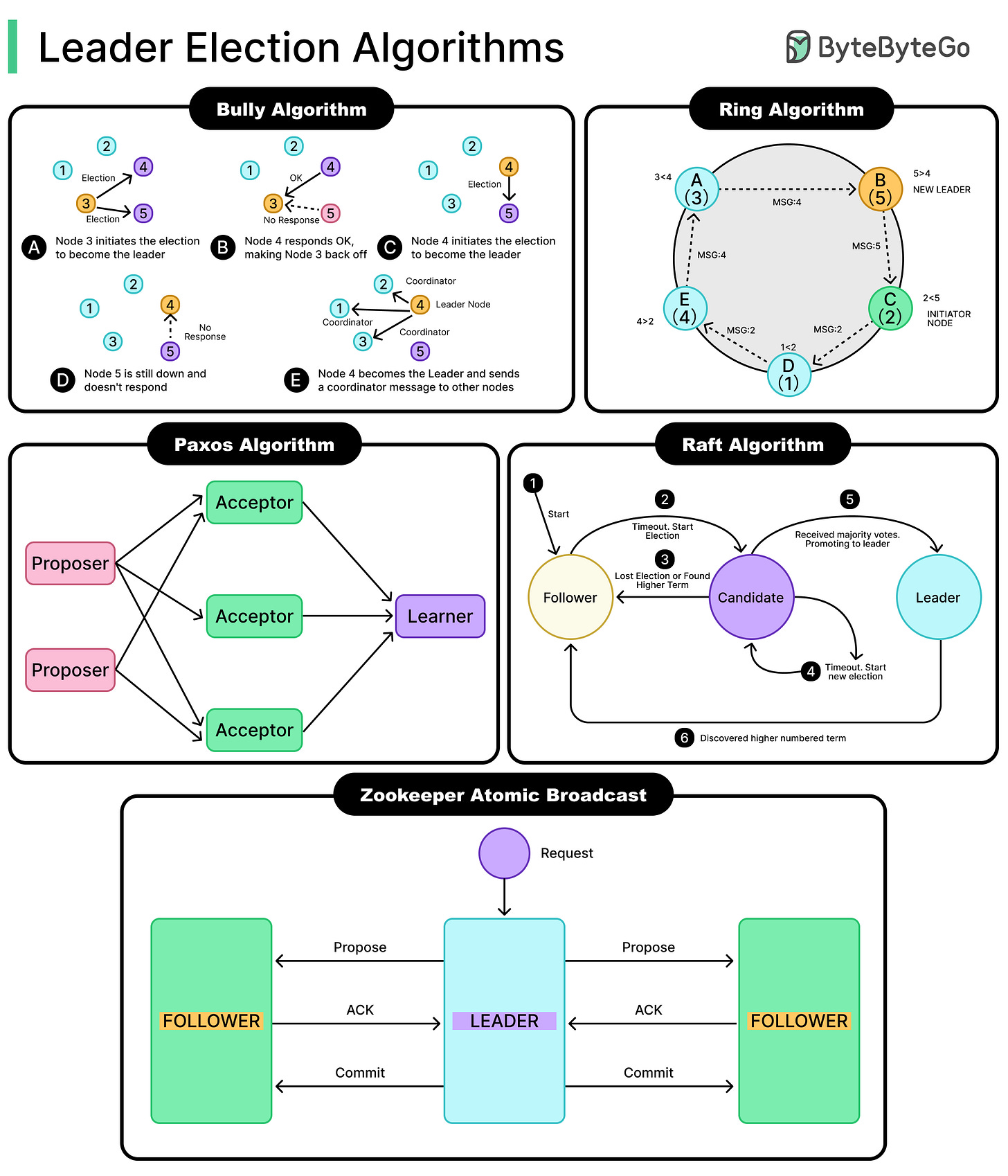Top Leader Election Algorithms in Distributed Databases
Distributed database systems rely on coordination to work properly. When multiple nodes replicate data and process requests across regions or zones, a particular node has to take charge of write operations. This node is typically called the leader: a single node responsible for ordering updates, committing changes, and ensuring the system remains consistent even under failure.
Leader election exists to answer a simple but critical question: Which node is currently in charge?
The answer can’t rely on assumptions, static configs, or manual intervention. It has to hold up under real-world pressure with crashed processes, network delays, partitions, restarts, and unpredictable message loss.
When the leader fails, the system must detect it, agree on a replacement, and continue operating without corrupting data or processing the same request twice. This is a fault-tolerance and consensus problem, and it sits at the heart of distributed database design.
Leader-based architectures simplify the hard parts of distributed state management in the following ways:
They streamline write serialization across replicas.
They coordinate quorum writes so that a majority of nodes agree on each change.
They prevent conflicting operations from impacting each other in inconsistent ways.
They reduce the complexity of recovery when something inevitably goes wrong.
However, this simplicity on the surface relies on a robust election mechanism underneath. A database needs to be sure about who the leader is at any given time, that the leader is sufficiently up to date, and that a new leader can be chosen quickly and safely when necessary.
In this article, we will look at five major approaches to leader election, each with its assumptions, strengths, and trade-offs.



